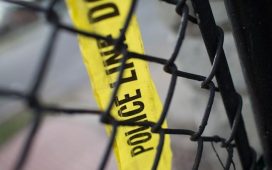The British Horseracing Authority (BHA) and Racing Foundation commissioned a study to determine a horse’s range of vision in an effort to make steeplechase fences easier for horses to see, thus reducing the risk of falls and injuries.
The scientists involved in the study determined that horses view colors differently than humans. Humans and other primates can see four basic colors: red, green, blue and yellow, and they can see about 100 variations in hue. Horses and other non-primate mammals are likely to see only two basic colors: yellow and blue.
Currently, hurdle frames, take-off boards and guardrails are orange, which is highly visible to humans, but not likely to be seen by horses.
Drs. Sarah Paul and Martin Stevens of the University of Exeter compared the traditional orange markers to yellow, blue and white alternatives. They also investigated how weather conditions and light affected the color contrast of the markers. The research team determined that yellow, white and blue were more easily seen against the fences and their surroundings. Luminescent whites and blues at the take-off board had the best contrast and fluorescent yellow offered the best contrast against the main body fence.
When testing horse’s responses to the various jump colors, they found that the color of the fence affected the angle at which a horse jumps the fence and the length of the jump: White produced the longest jump.
The researchers suggest that the best combination of colors for visibility under a range of conditions is to use fluorescent white for take-off boards and fluorescent yellow for hurdles and guard-rails. These colors will now be used on some racecourses as a trial to determine their effectiveness.
Read the full article here.
Read more at Equine Science Update.
New to the Paulick Report? Click here to sign up for our daily email newsletter to keep up on this and other stories happening in the Thoroughbred industry.
Copyright © 2020 Paulick Report.






